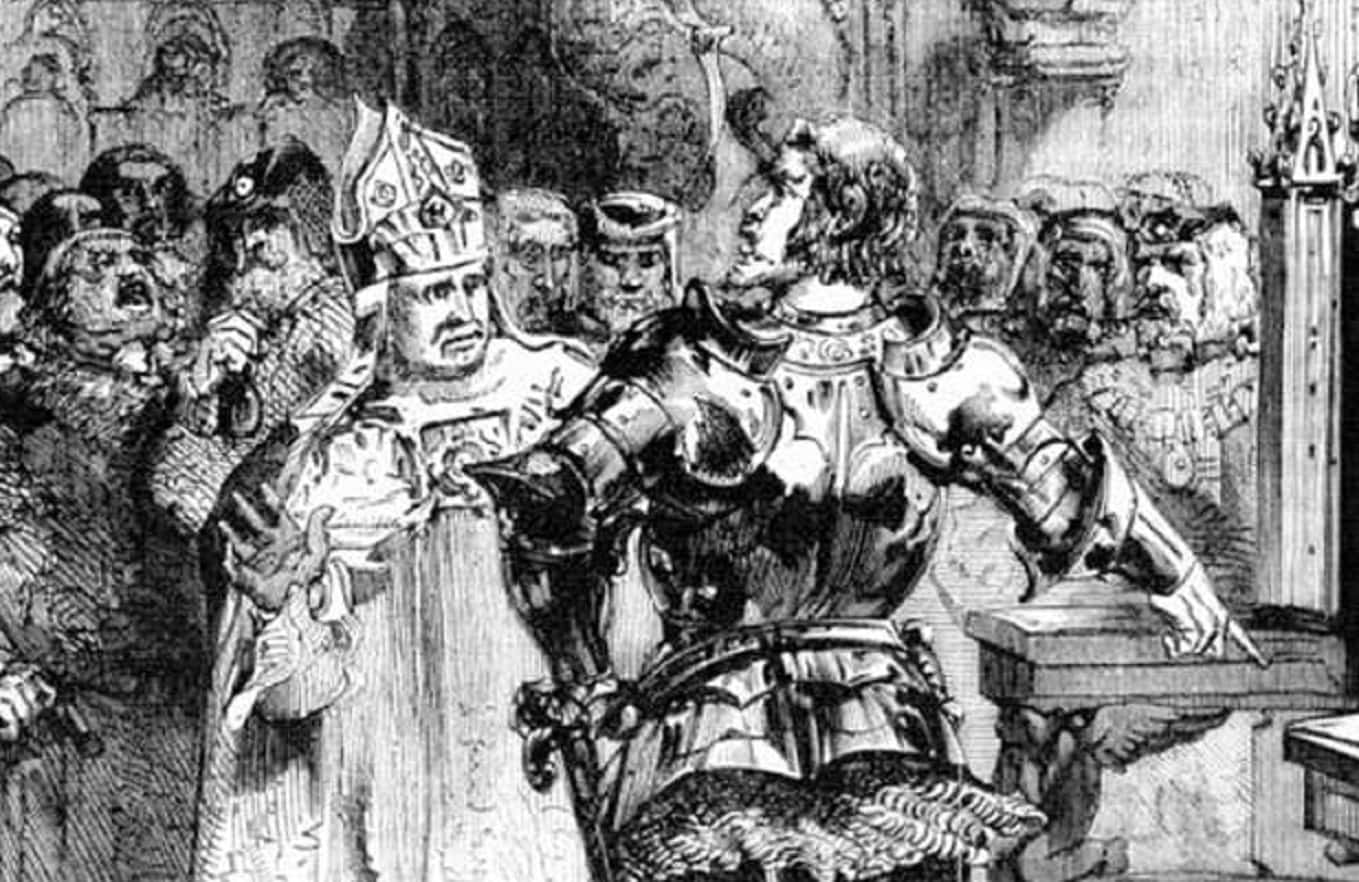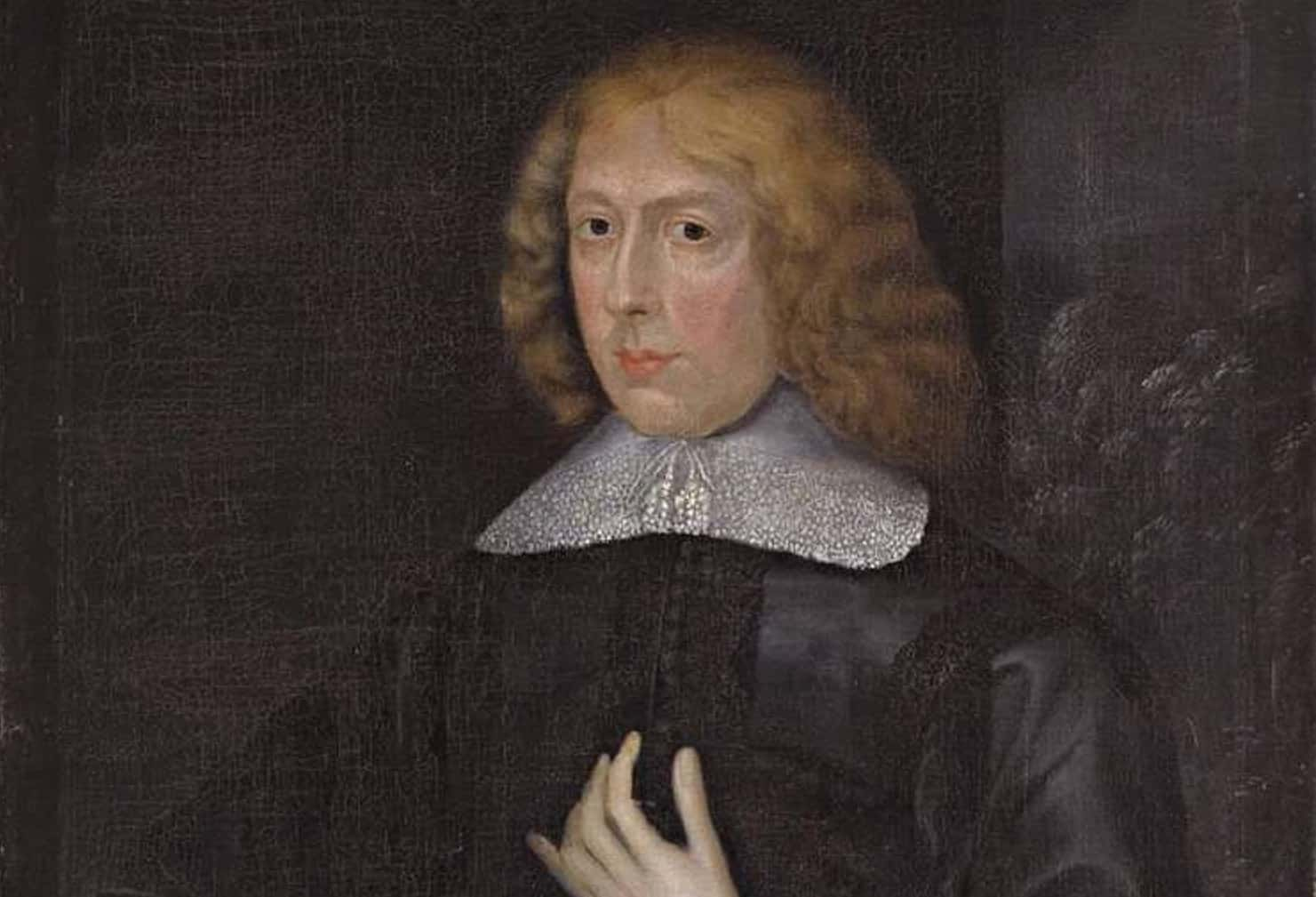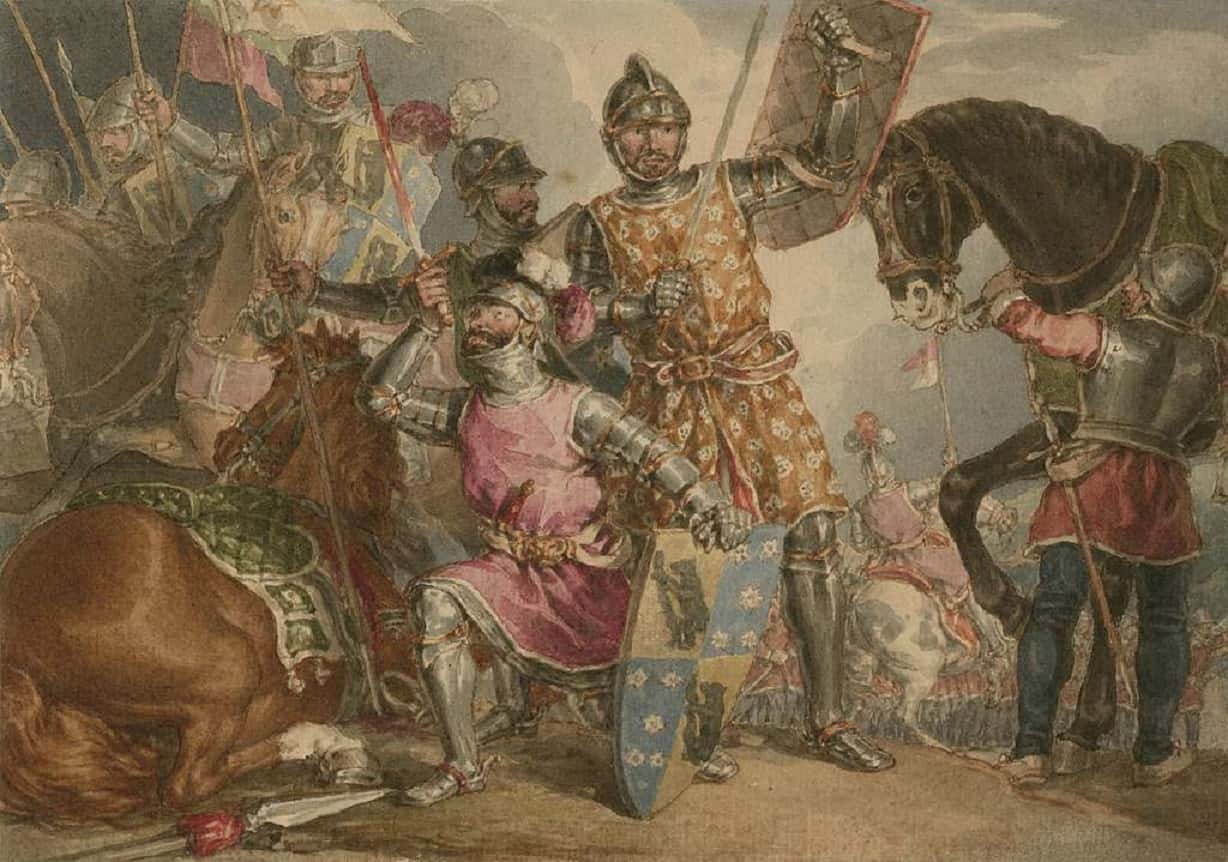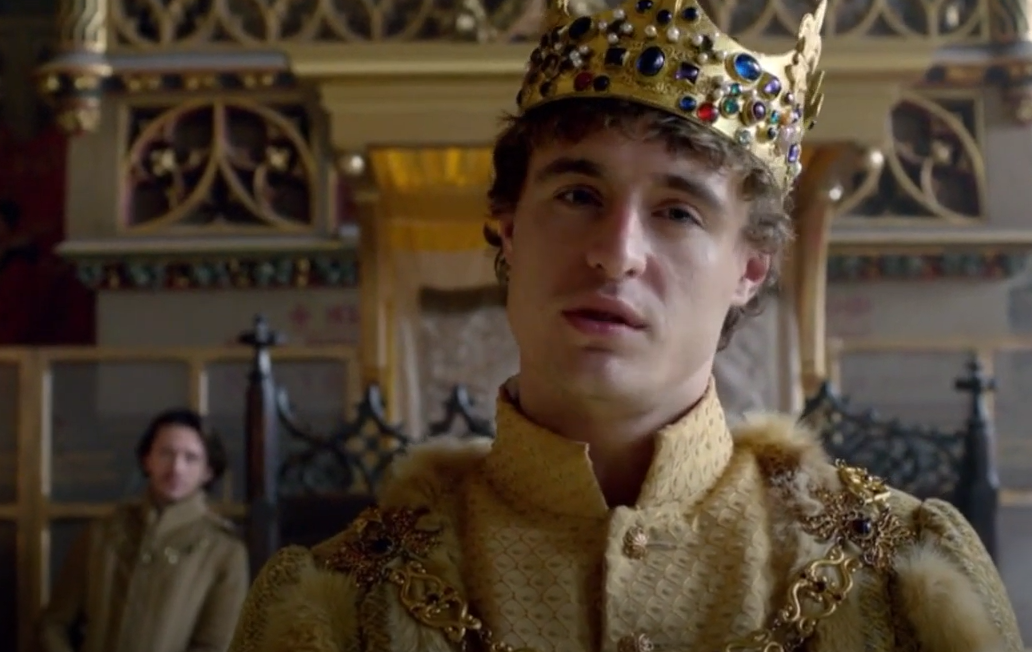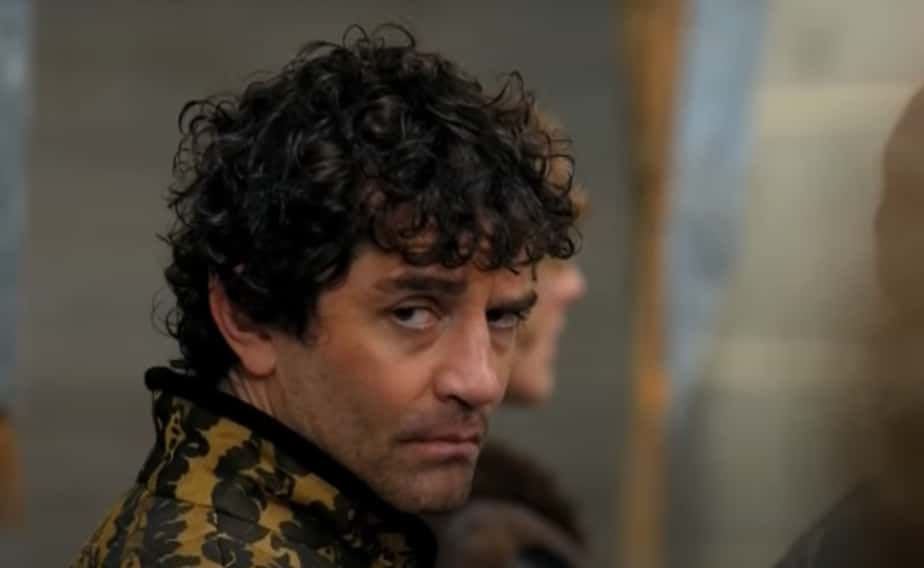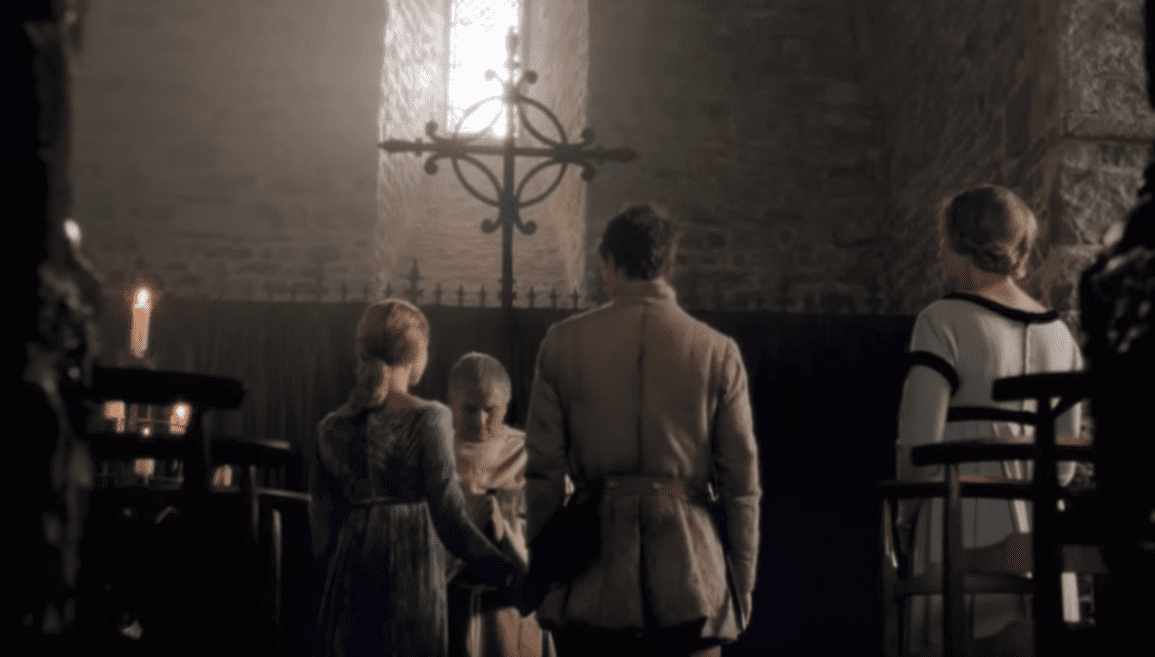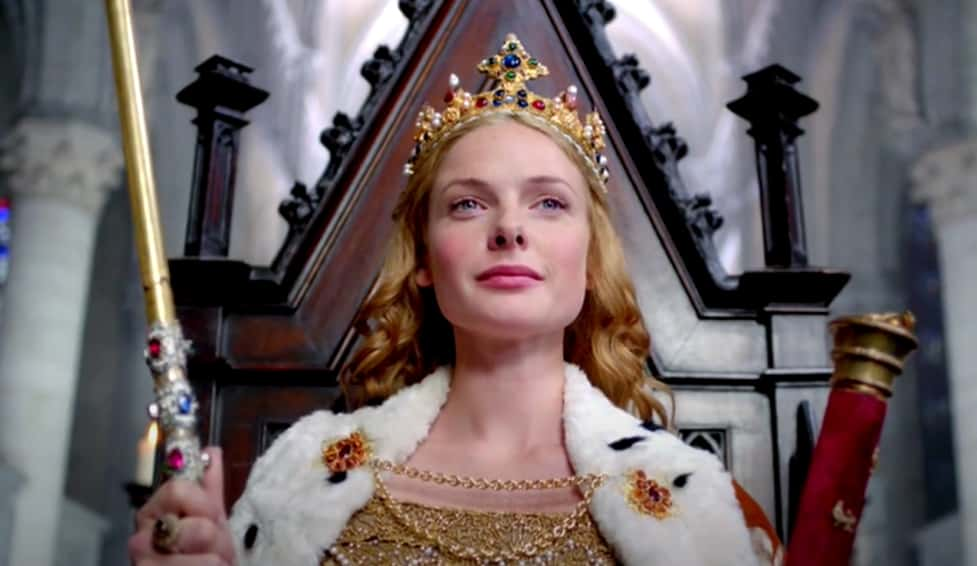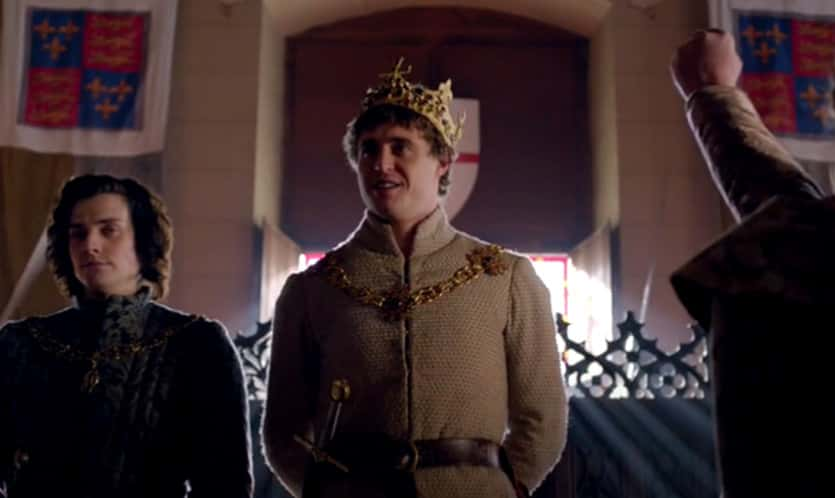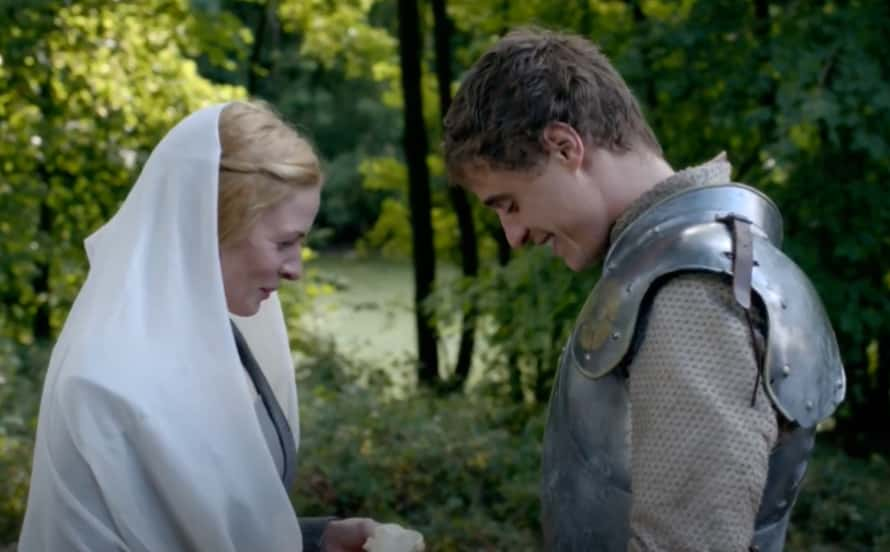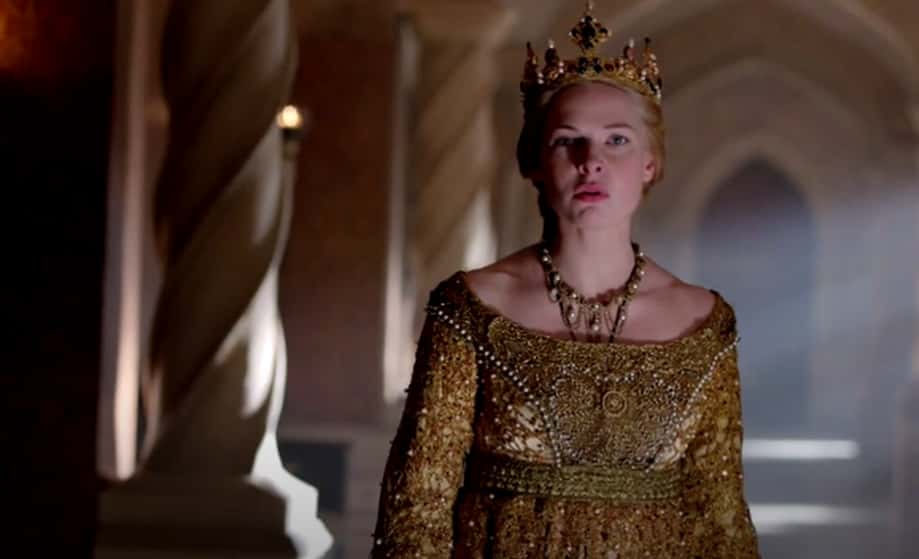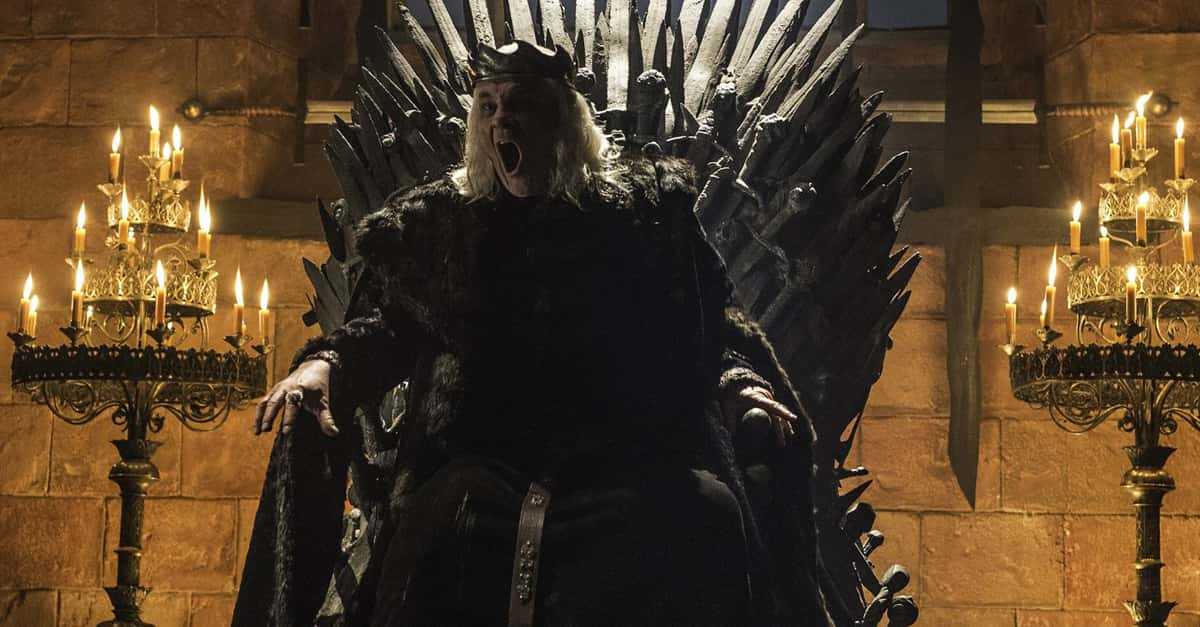Edward IV was the closest thing to a medieval superhero. Tall, blonde, and handsome, he was a fierce warrior who took England's throne for himself...twice. He died as the King of England—but this is no success story. His greed, arrogance, and lack of foresight saw everything he ever accomplished collapse almost the moment he gave his last breath.
1. He Wasn't From England
Though he'd end up King of England, Edward was born across the Channel in Rouen, Normandy, the eldest son of Richard, the Duke of York, and Cecily Neville. The couple went on to have many more children, all of whom would become major players in the looming Wars of the Roses—but as the kids grew up, scandalous whispers swirled around Edward's parents.
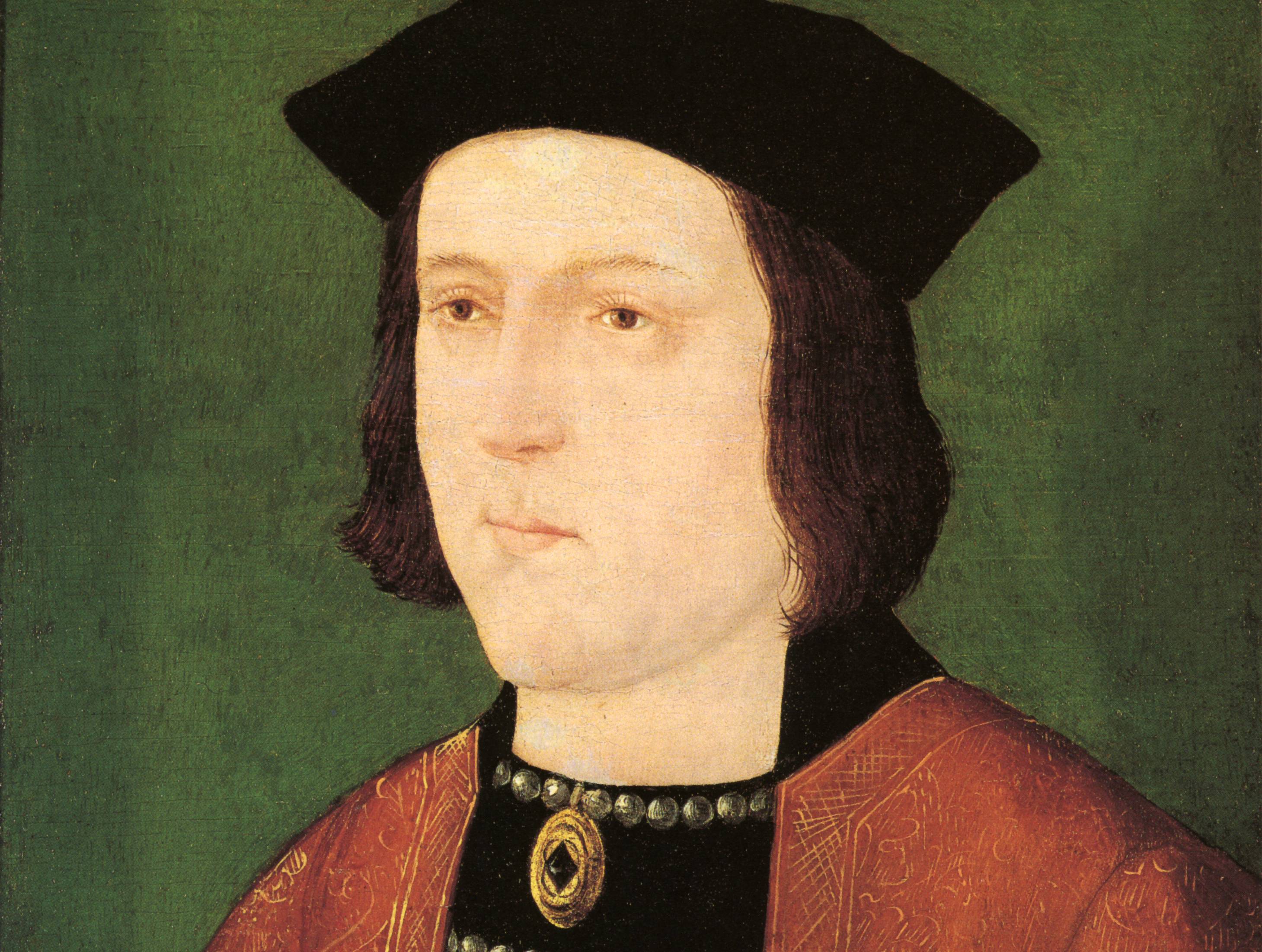 National Portrait Gallery, Wikimedia Commons
National Portrait Gallery, Wikimedia Commons
2. His Parents Faced Scandalous Rumors
The York children grew up into a family of little Lannisters: Edward, his brother George, and his sister Margaret were all tall, blonde, and gorgeous. They were a brood that any parent would be proud of...but there was just one problem. Their father, the Duke of York, was short and dark.
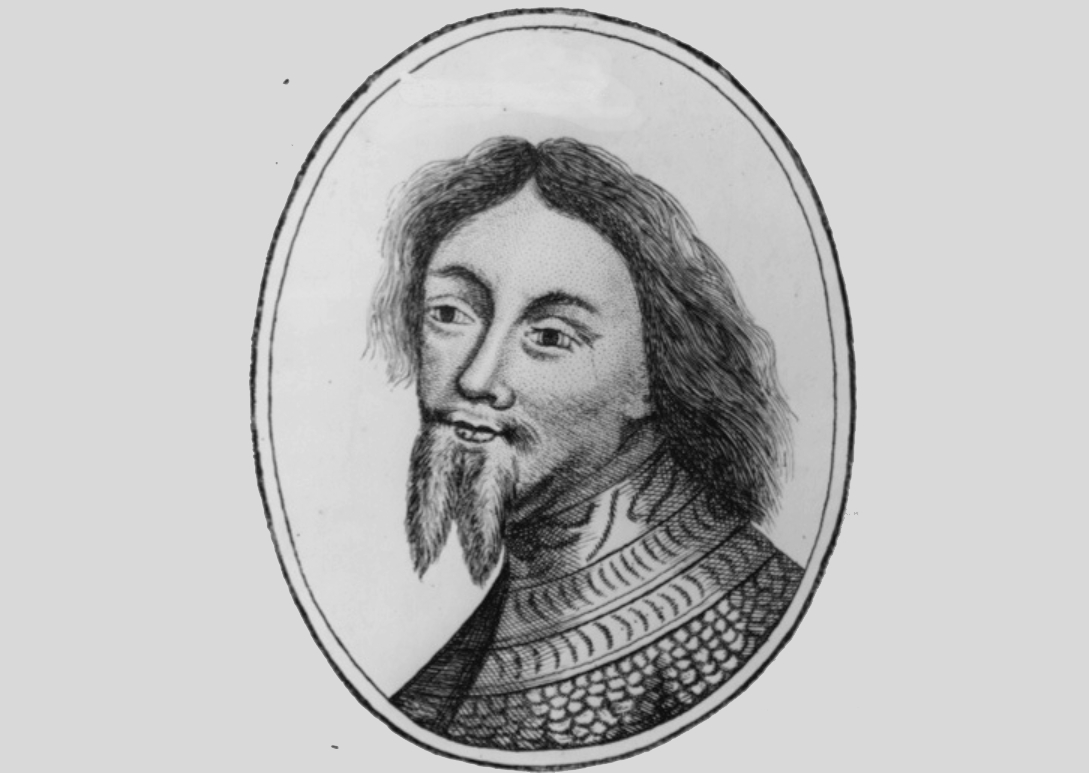 Unknown Author, Wikimedia Commons
Unknown Author, Wikimedia Commons
3. They Had Enemies
Though rumors of infidelity swirled around Edward's mother, most historians agree that they were just that: rumors. Some of Edward's siblings, such as his younger brother Richard, looked far more like their father than their mother. The most likely explanation was that the Duke of York's political enemies spread the rumor to try and discredit him. Oh, and speaking of political enemies...
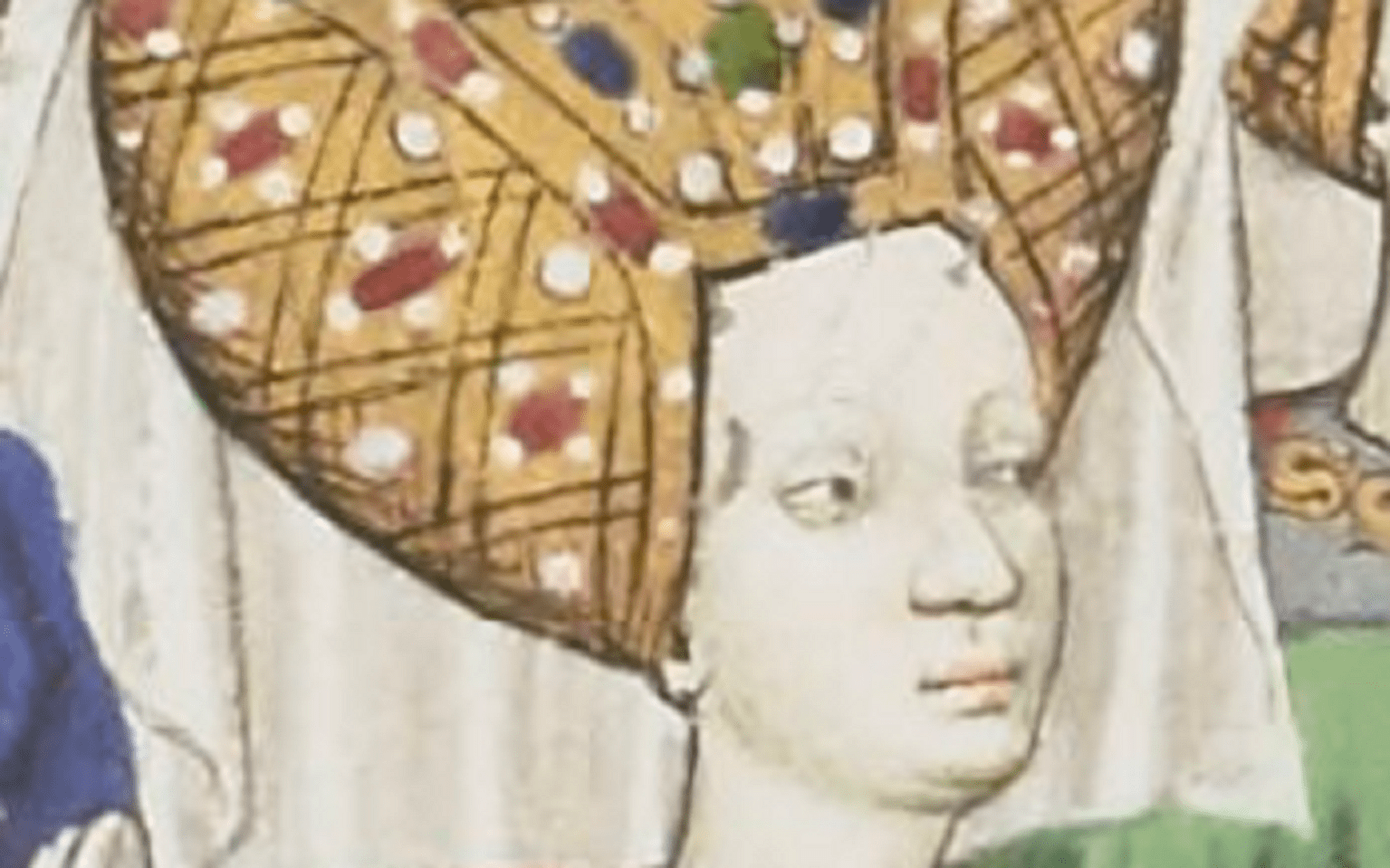 Meister der Münchner, Wikimedia Commons
Meister der Münchner, Wikimedia Commons
4. He Had Opportunities
Back in England, the 22-year-old King Henry VI held the throne. The thing was, Henry was feeble, indecisive, and prone to crippling fits of madness. So while Edward's family had no crown to their name, there was a feeling in the air that anything could happen. As the years started to pass, things only got worse.
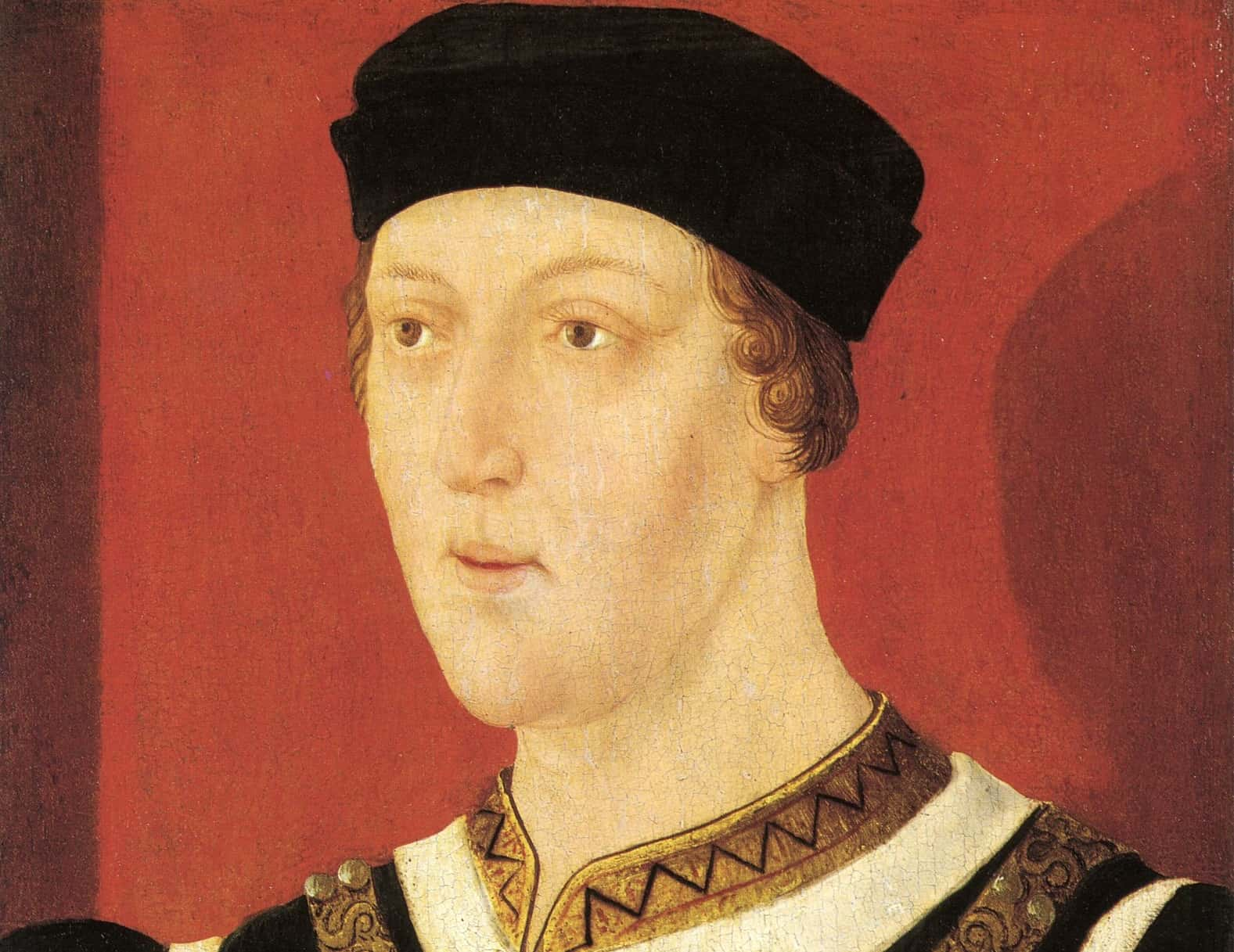 National Portrait Gallery, Wikimedia Commons
National Portrait Gallery, Wikimedia Commons
5. His Dad Threw His Hat In The Ring
Henry VI was severely unstable, and it wasn't long before he started losing English territory left and right. "The Divine Right of Kings" was one thing, but Henry was proving to be an embarrassment. Some people started to whisper that maybe England should have a new king. Maybe someone like...Edward's father, Richard of York.
Richard was strong, decisive, and a direct descendant of King Edward III. Pretty soon, his intentions for the throne were clear. He would never see them through, but at least Edward would be able to live out his dream.
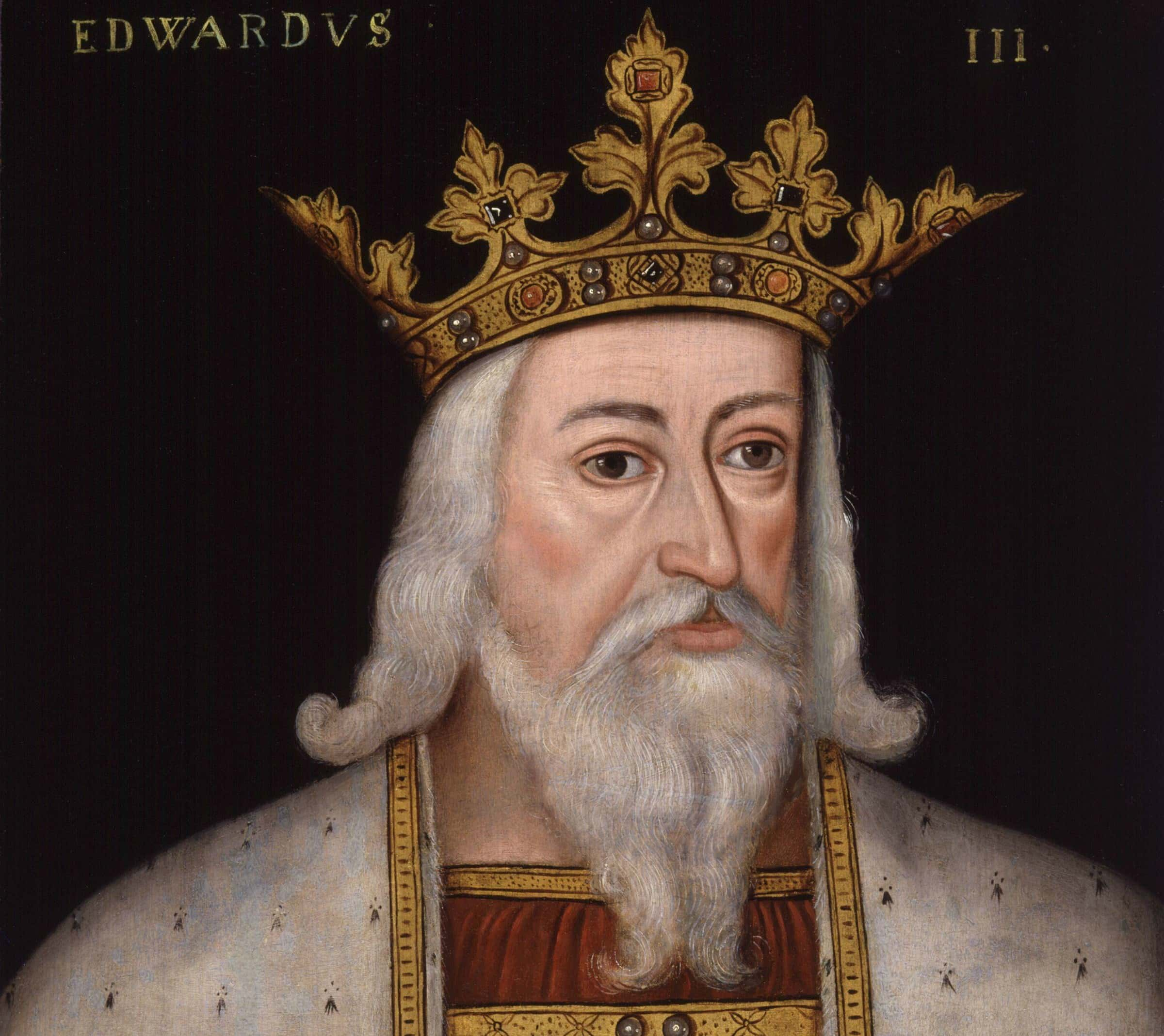 Unknown author, Wikimedia Commons
Unknown author, Wikimedia Commons
6. The King Turned On Them
At Edward's birth, his father was the governor of all English lands in France. However, soon after his birth, King Henry unceremoniously dumped Richard of York, with his rival the Duke of Somerset replacing him as governor. For Edward, that meant packing up his life and moving to the Welsh Marches, where his dad held substantial land.
He would return to his homeland before long—and by then, Edward would be out for blood.
 James William Edmund Doyle, Wikimedia Commons
James William Edmund Doyle, Wikimedia Commons
7. They Saw Their Chance
It was bad enough that King Henry replaced Richard of York as governor, but to add insult to injury, Somerset did a terrible job. Seeing that England was vulnerable with a king like Henry, France went on the offensive, slowly taking back territory on the mainland. In 1453, they went for the jugular and reclaimed Gascony, a territory that the English had controlled for over three centuries.
It was a terrible loss for England—but an amazing opportunity for Edward and his family.
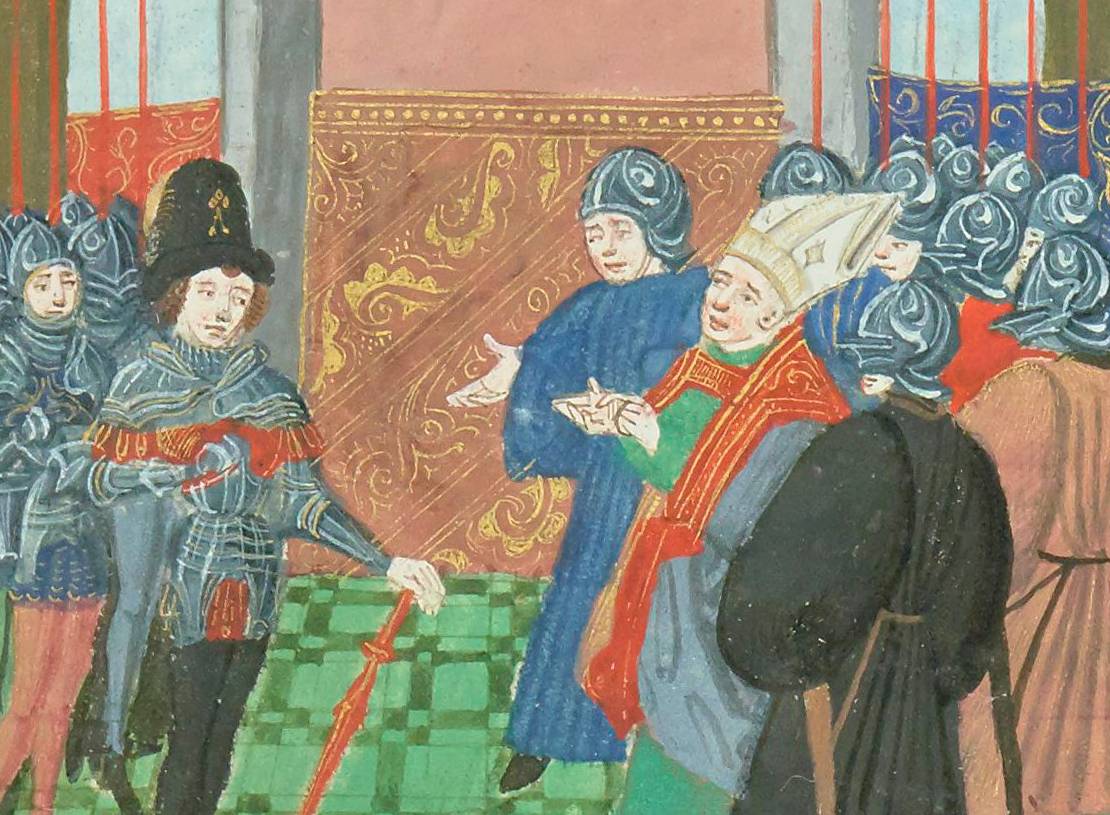 Philippe de Mazerolles, Wikimedia Commons
Philippe de Mazerolles, Wikimedia Commons
8. His Dad Took Over
When Henry VI learned that he'd lost Gascony, his mind simply...broke. He fell into a catatonic stupor and remained like that for more than a year. For the Yorks, that was the final straw. Though only 12 years old, Edward rode right beside his father as they entered London to attend the Great Council—a formal assembly called to determine England's path forward.
By the end of the Great Council, Richard of York effectively had control of the English government. Edward was still a boy—but he was about to grow up very fast.
 Talbot Master, Wikimedia Commons
Talbot Master, Wikimedia Commons
9. He Had To Sink Or Swim
King Henry VI eventually woke up from his stupor, and he found a very different kingdom waiting for him. The nobles had split down the middle: The Lancastrians, who supported Henry, and the Yorks, who supported Richard. Though not yet in open conflict, it was in this viper's den that young Edward cut his teeth. He was a force to be reckoned with in the kingdom before he was 17 years old.
It was a good thing too; the Wars of the Roses were about to start in earnest, and the Yorks were going to need all the help they could get.
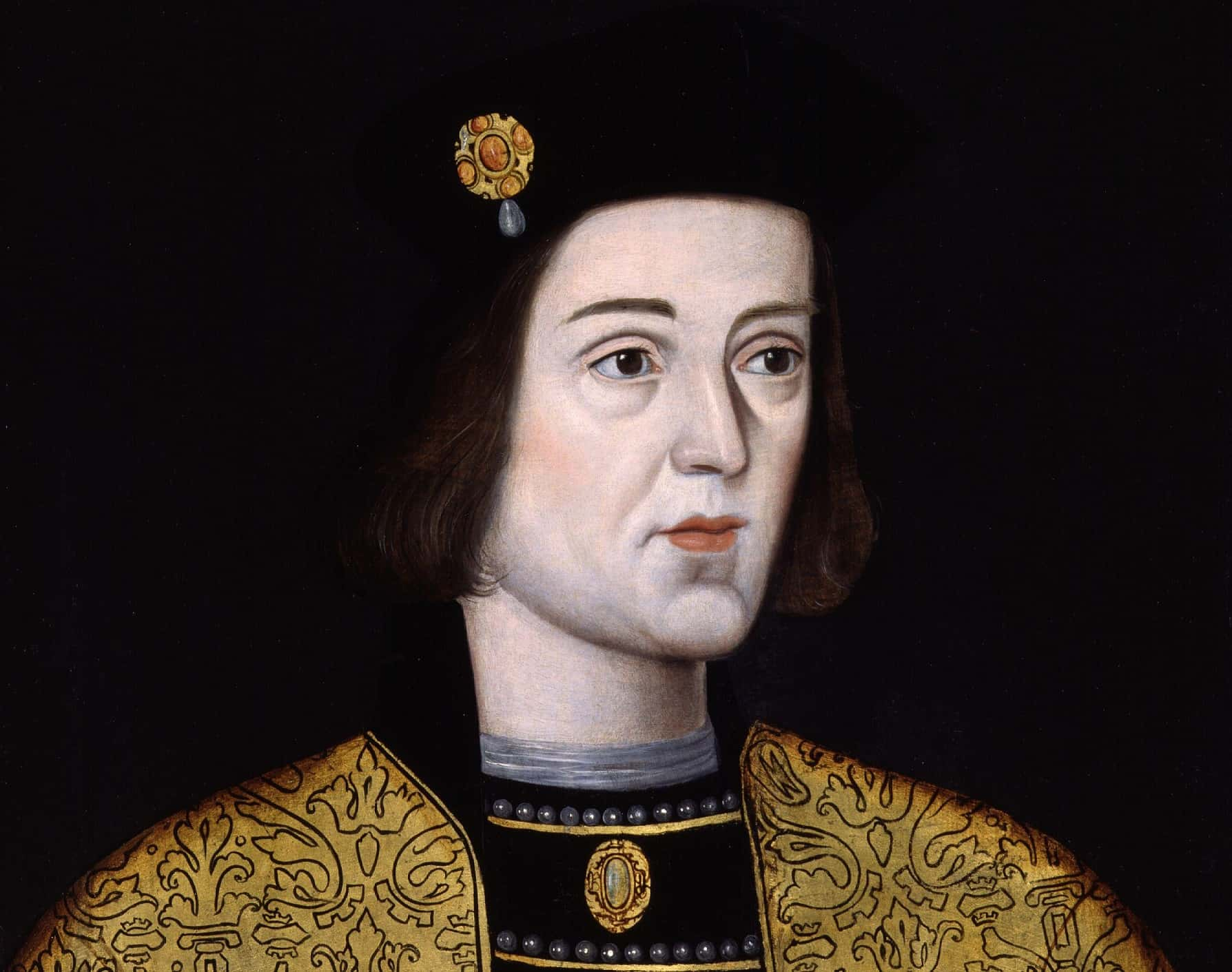 Unknown Author, Wikimedia Commons
Unknown Author, Wikimedia Commons

Sign up to our newsletter.
History’s most fascinating stories and darkest secrets, delivered to your inbox daily. Making distraction rewarding since 2017.
10. He Captured The King
In 1460, the Yorkists took London. Not long after, Edward was one of three commanders behind a decisive Yorkist victory at Northampton. What made it so decisive? Oh, just that they managed to capture King Henry VI. Just like that, the House of York had won! Right? Well...not exactly. Unfortunately, Edward and his family were about to learn just how hard it was to take a crown off a king's head.
 BBC, The White Queen (2013)
BBC, The White Queen (2013)
11. Things Got Even Messier
After Edward captured the king, his father marched into the Palace of Westminster and declared himself the King of England in front of the kingdom's assembled lords. He got crickets in response. York realized that taking England wasn't going to be quite so simple. Eventually, the two sides reached a compromise: Henry VI would remain king, but Richard of York was to be his successor.
It was a half-measure at best; little wonder the deal went up in flames almost immediately.
12. He Said Goodbye To His Father
Though the Yorks made their deal in London, Lancastrian nobles in the countryside weren't so easily convinced. Rebellions flared up all across the country, and Richard of York had to act fast. He sent his eldest son Edward to Wales to suppress a revolt there while he took another son, Edmund, to the North to do the same.
Edward didn't realize it yet, but he'd never see his father again.
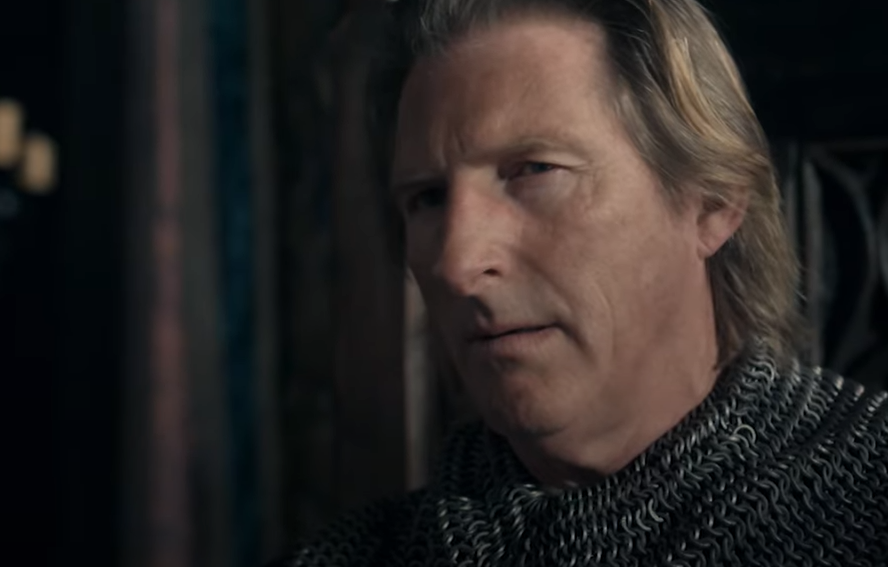 BBC, The Hollow Crown (2012–2016)
BBC, The Hollow Crown (2012–2016)
13. He Became The #1 Guy
The Battle of Wakefield was an utter catastrophe for the Yorkist cause. Not only did they lose, but both Richard of York and his son Edmund lost their lives in the fray. Suddenly, the House of York's hopes rested squarely on 18-year-old Edward's shoulders. Thankfully, he had the perfect shoulders for the job.
In case it wasn't clear already: Edward IV was a total hunk.
 George Vertue, Wikimedia Commons
George Vertue, Wikimedia Commons
14. He Was A Hunk Of Man Meat
Edward IV was what all nobles wished they could be. At 6'4", he towered over his contemporaries, especially while clad in his gleaming armor. Edward was likable, handsome, and bursting with energy. His advisors had him play up these characteristics and ensured he always wore the finest clothes. But he didn't do all of this out of simple vanity. No, he had a much deeper purpose.
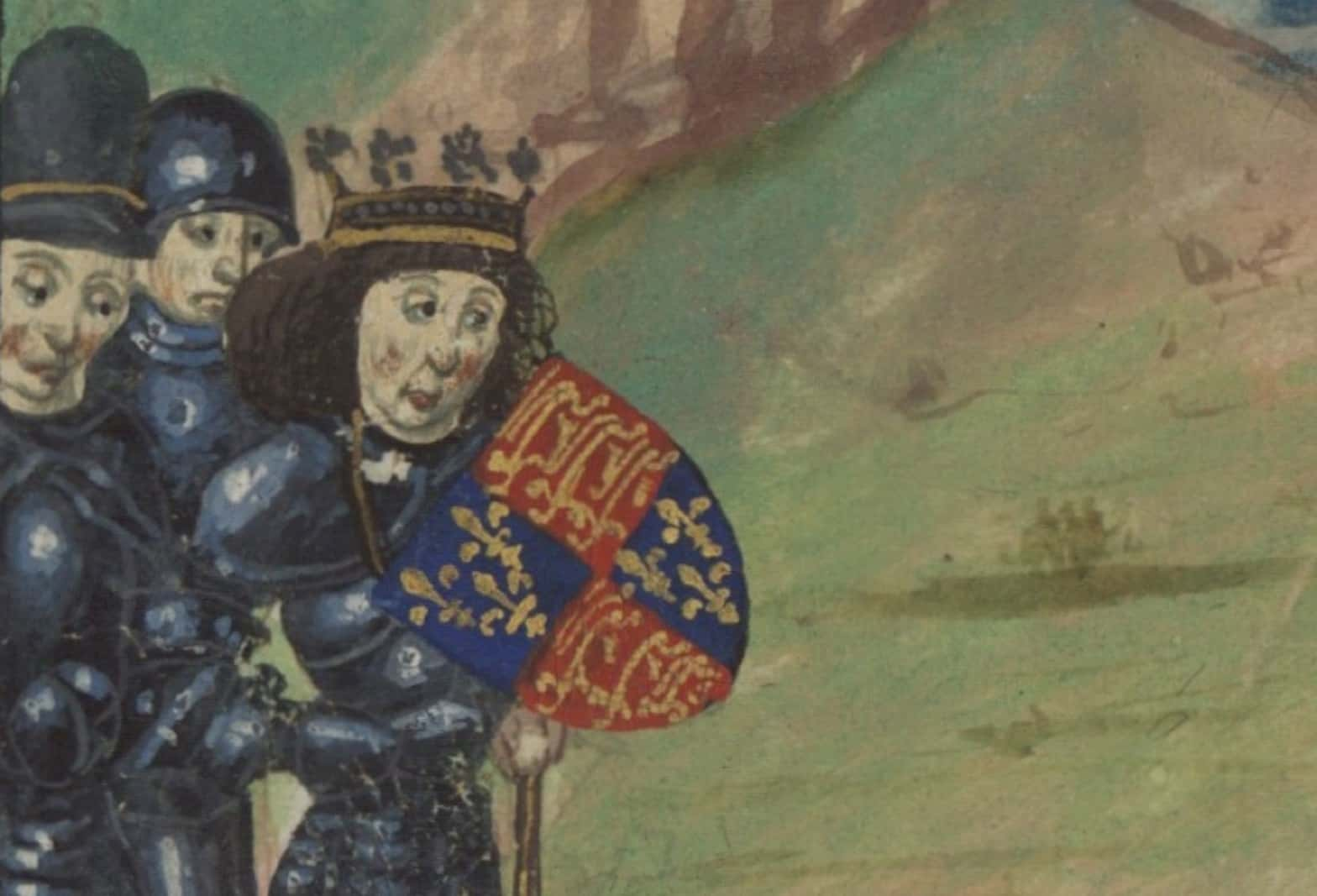 Ghent master, Wikimedia Commons
Ghent master, Wikimedia Commons
15. He Looked Even Better In Comparison
Remember: Henry VI was still the King of England, and Edward hoped to change that. As a tall, handsome, fashionable warrior, Edward could not have been more different from the feeble, absent-minded Henry. Who would you rather have as your king: the Adonis or the wimp? But dressing the part was just half the battle for Edward. The other half of the battle? Battle.
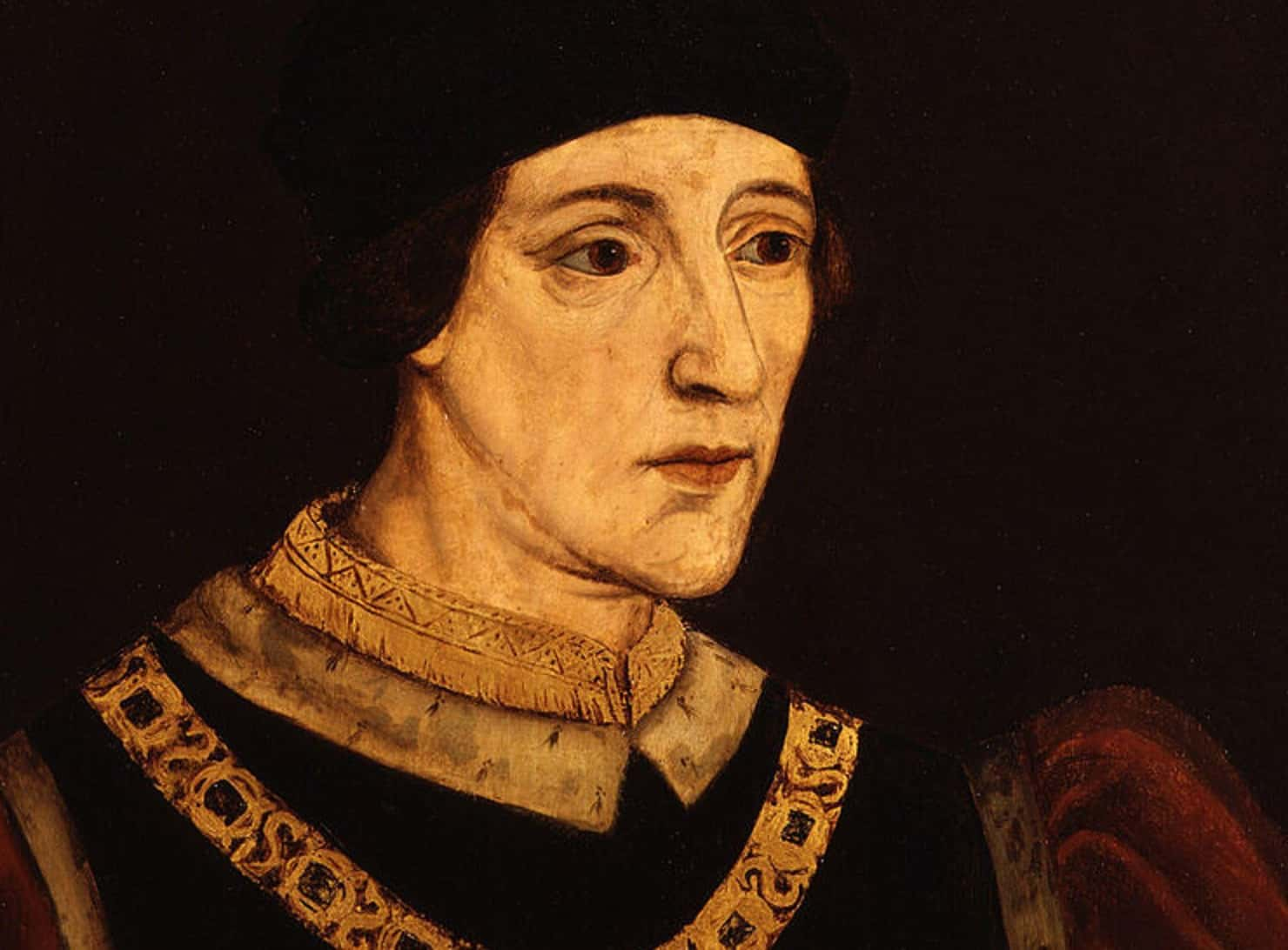 National Portrait Gallery, Wikimedia Commons
National Portrait Gallery, Wikimedia Commons
16. He Was Ready To Fight For The Crown
Edward had amassed enough power to proclaim himself king in March of 1461, but he still had those pesky Lancastrians to deal with. On March 29, in the middle of a raging snowstorm, Edward led his men against the Lancastrians. Ironically, the Duke of Somerset—the son of the man who usurped Richard of York's governorship all those years ago—led the enemy forces.
Edward would cement his claim as king that day, though it would come at a terrible cost.
17. He Fought A Terrible Battle
The snow ran red with blood at the Battle of Towton, perhaps the most brutal battle to ever take place on English soil to that point. Estimates range from 9,000 casualties to 20,000. In the centuries since, most of the graves from the site had been emptied or moved, so it has been difficult to say for sure what happened that day.
But, since 1996, archaeologists have uncovered the remains of up to 50 men who fought in the battle—and their bones tell a chilling tale.
18. His Men Were Brutal
The researchers who examined the skeletons from Towton came to a grim conclusion: The battle was even more horrific than we'd realized. Though some of the injuries were clearly made during battle, many of the bones showed signs of extensive post-mortem mutilation. This was clearly no honorable victory—so it's little surprise that the defeated Lancastrians bore a grudge against their new Yorkist king.
Edward would soon regret not keeping his men in check.
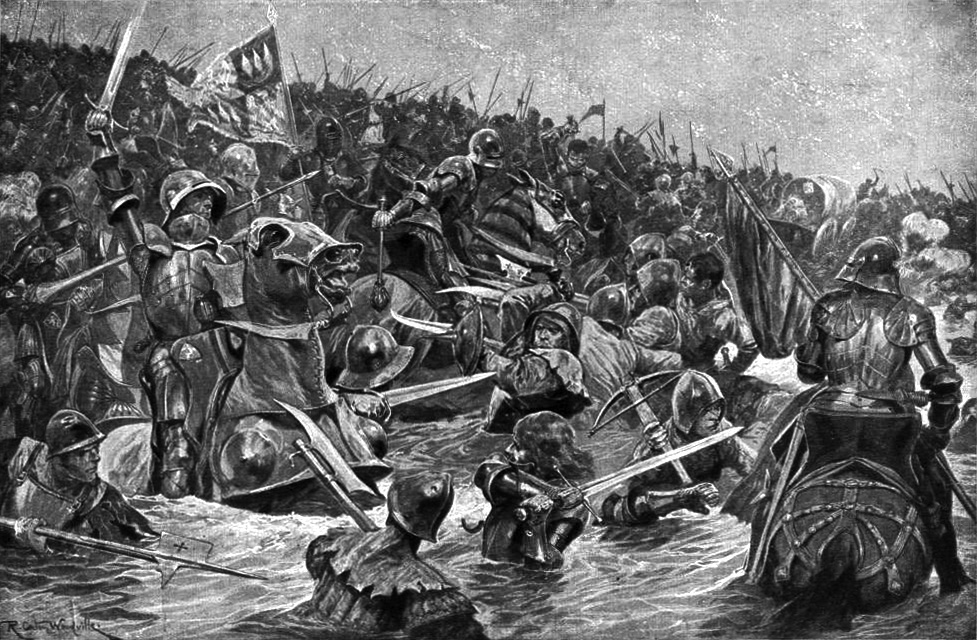 Richard Caton Woodville Jr., Wikimedia Commons
Richard Caton Woodville Jr., Wikimedia Commons
19. He Was On Top...For Now
Edward returned triumphant to London for his official coronation as King Edward IV of England. He had achieved what his father never could—but he couldn't get comfortable yet. Henry VI remained at large. Even worse, Henry's wife, Margaret of Anjou, had fled to Scotland with their son. While Henry was incapable, his wife was one of the most cunning and ruthless women in Europe.
Margaret of Anjou had lost this round against Edward, but she was far from finished.
20. He Captured His Rival
Though Margaret of Anjou eventually escaped across the English Channel, Edward did manage to capture Henry VI. Unfortunately, Henry was such a weak king that that didn't actually mean much. There was no sense in killing him, because that would just mean his son would take his place. So, instead of giving the Lancastrians a younger, stronger figurehead, Edward simply locked Henry up in the Tower of London and threw away the key.
Now he had a kingdom to run—and this would prove his toughest challenge yet.
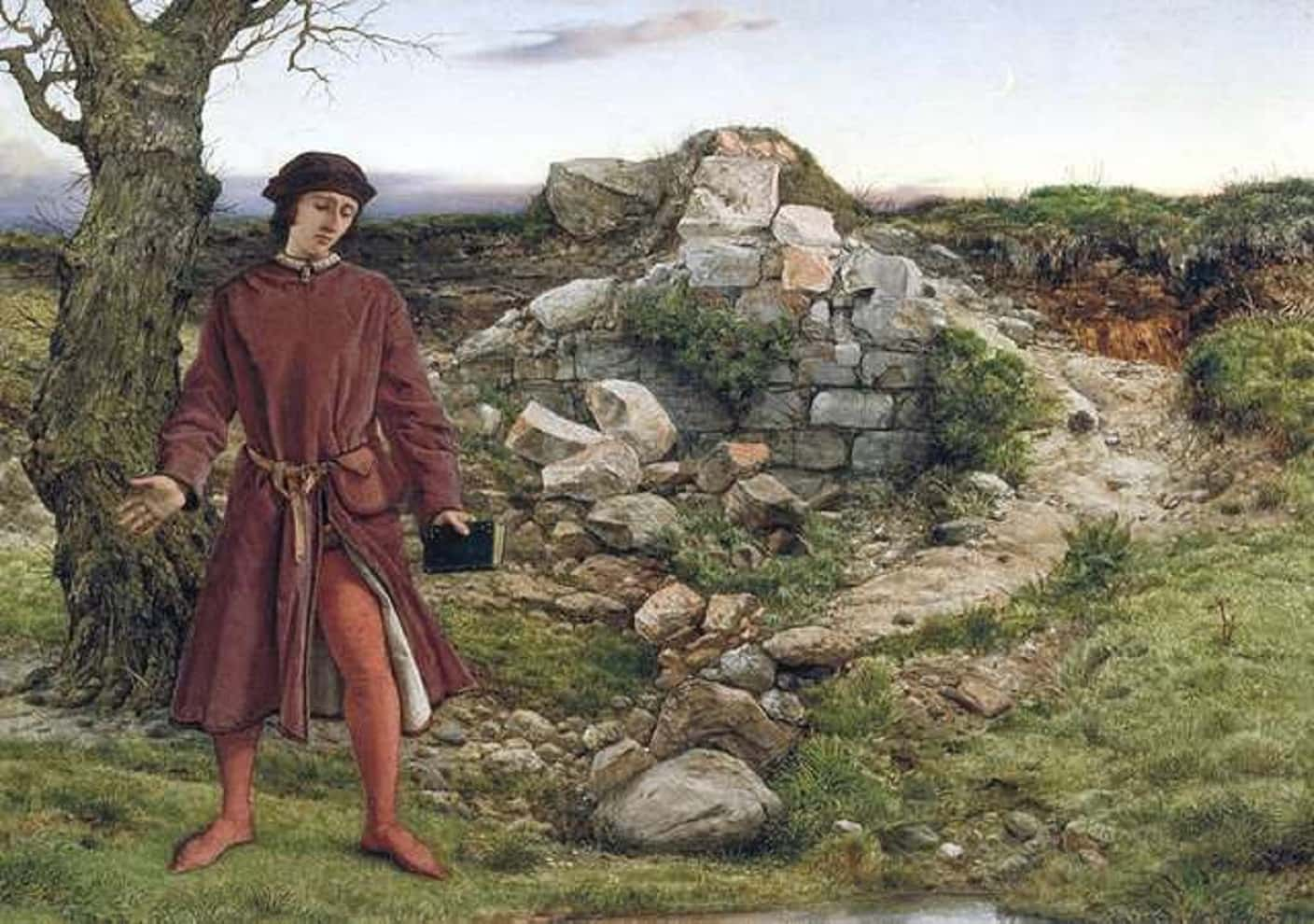 Wikimedia Commons, Picryl
Wikimedia Commons, Picryl
21. He Had His Work Cut Out For Him
Taking the crown was one thing. Making anyone listen to you was another. For the most part, England's nobility simply stayed neutral, though many stayed loyal to Henry. As such, Edward had a hard time running his kingdom at first. He had to rely heavily on his closest ally, Richard Neville, the Earl of Warwick.
Neville was one of the richest and most powerful men in the country, and the alliance between York and Warwick went back to the days of Edward's father. Though Edward IV would soon learn: Your most powerful ally can become your most dangerous enemy.
 Unknown Author, Wikimedia Commons
Unknown Author, Wikimedia Commons
22. He Had New Enemies To Worry About
By 1464, Edward had all but eliminated the Lancastrian threat to his throne, but that didn't mean his problems were at an end. England was in his grasp, but now that the Lancasters were all but gone, internal divisions revealed themselves. Edward was king, and now he had to deal with the standoff between two other political powerhouses: France and Burgundy.
He needed all the help he could get, so he started to lean even more on Neville.
23. He Chose A Side...
Edward knew that he needed to team up with either France or Burgundy. He preferred the latter—his sister had married the Duke of Burgundy after all—but Neville wanted to go the French route. Edward relented and allowed Warwick to begin negotiating a marriage between Edward and a French princess.
But little did he know, while Neville was out making deals, Edward was keeping an enormous secret: one that would see the Wars of the Roses, all but dead and buried at this point, begin raging once again.
24. He Kept A HUGE Secret
Just as he was closing in on a marriage deal between Edward and the French King, Richard Neville made a shocking discovery: Edward had already gotten married in secret. To Elizabeth Woodville, who was not only a widow with two sons, but even worse, a commoner. It was an unbelievable betrayal, and it begs the question: What on Earth was Edward thinking?
25. He Married A Babe
This one isn't too hard to put together. Everyone said that Elizabeth Woodville was the most beautiful woman in all of Great Britain. Even more, she was allegedly charming and intelligent to boot. She was a medieval Helen of Troy, and while her face may not have launched a thousand ships, it nearly cost Edward IV everything.
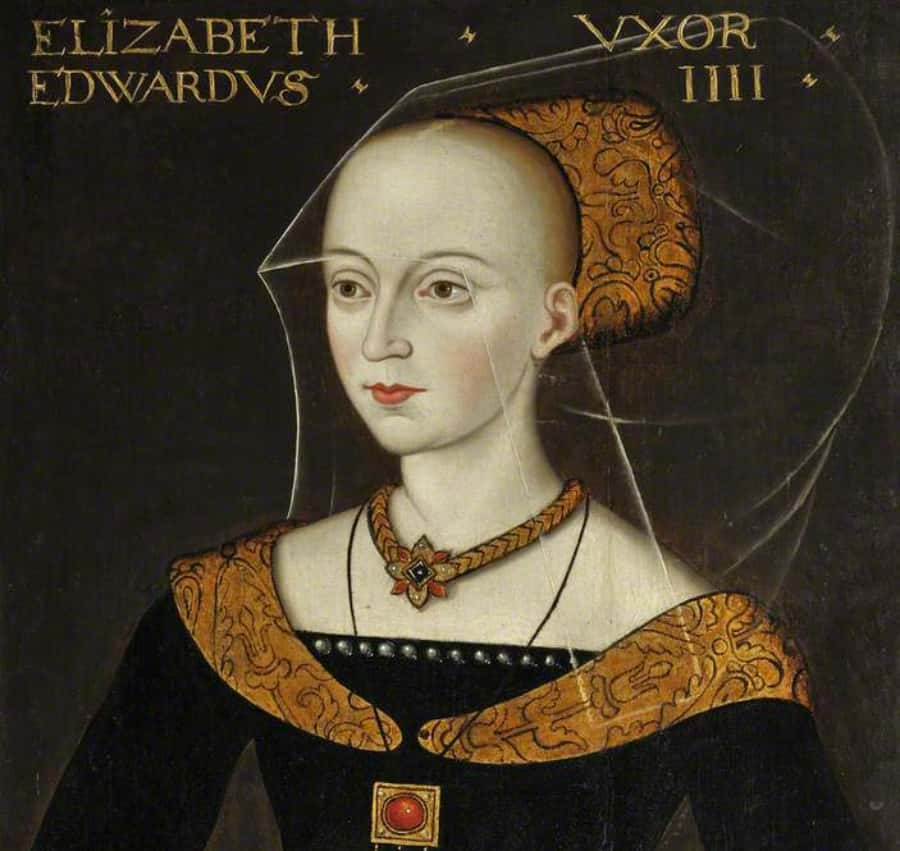 Ann Longmore-Etheridge, Flickr
Ann Longmore-Etheridge, Flickr
26. He Liked The Power Dynamic
Though Edward's new bride may have been a babe, there may have been a more sinister motive behind their union. Edward, though tall, handsome, and capable, was also something of a spoiled brat. He had gotten what he wanted for his entire life. He loved being the most powerful man in the room. By marrying Elizabeth, he had tied a string to her entire family.
The Woodvilles needed Edward IV, and he likely loved that. But was it worth the price?
27. He Kept It A Secret
Edward was used to getting what he wanted, but even he knew that marrying Elizabeth Woodville would be controversial. That's why he married her in total secrecy. Though no official records exist, it's likely the wedding took place at the Woodville's modest family home, with only the bride's mother and two other ladies present.
Edward was right to keep the wedding a secret. Once word got out, the consequences were immediate.
28. The Kingmaker Turned On Him
There is a reason that people called Richard Neville "the Kingmaker." He supported Edward throughout the entire Wars of the Roses. In his mind, he might as well have placed the crown on Edward's head himself. And this is how the new king repaid him? Not only was all that effort with the King of France a waste of time, but the Woodvilles offered absolutely no diplomatic advantage.
The King and the Kingmaker were officially at odds—and Neville soon found someone else to team up with. Someone from Edward's own family.
29. His Brother Turned On Him Too
Edward IV was Richard of York's eldest son, but there were still several other York boys on the scene, and they weren't all happy their older brother was taking all the glory. After the Woodville fiasco, Neville formed an alliance with Edward's brother George, the Duke of Clarence. To solidify the partnership, Neville proposed a marriage between George and his daughter, Isabel.
When Edward got word of this, he was less than enthused.
30. They Were Officially In Rebellion
Edward could see the writing on the wall: His brother and ex-friend teaming up was bad news. He blocked the marriage proposal—but he was in for a rude awakening. George and the Nevilles sailed off to Calais and went through with the marriage anyway. Next, they announced that they were assembling an army to remove the Woodvilles from power, whom they deemed Edward IV's "evil councilors."
But you know what they say: If you come for the king, you'd better not miss.
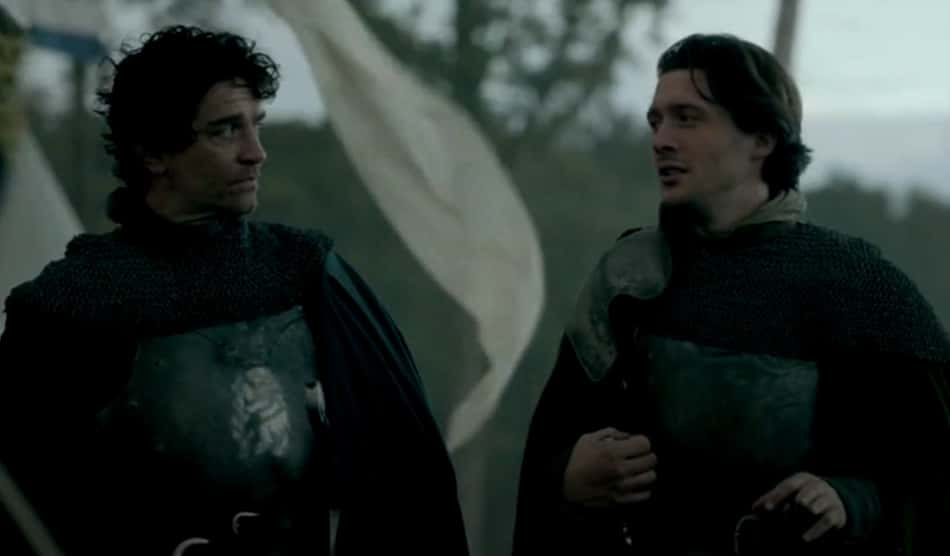 BBC, The White Queen (2013)
BBC, The White Queen (2013)
31. They Didn't Have The Juice
For a while, it seemed like this new alliance would succeed. They defeated a royal army in battle, imprisoned Edward in Middleham Castle, and had Elizabeth Woodville's father and brother both executed. They were probably feeling pretty good about themselves, but this is about when everything fell apart. Many in England were ready to put the Wars of the Roses behind them, and no further support for George and Neville's alliance materialized.
They had to release Edward after just a couple months—and at that point, they must have realized they were in trouble.
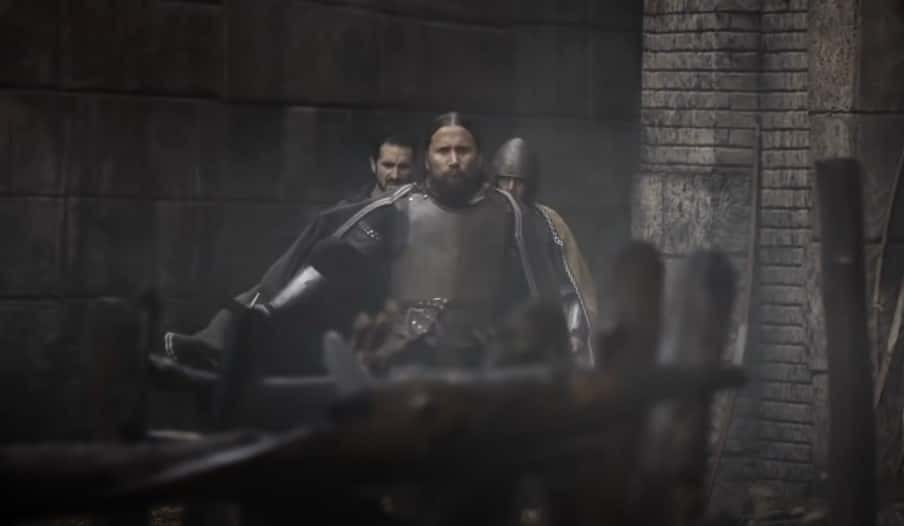 Channel 5 Productions, Britain's Bloody Crown (2016)
Channel 5 Productions, Britain's Bloody Crown (2016)
32. They Teamed Up With Edward's Worst Enemy
Tensions continued to simmer, and within the year, George and Neville had to flee to France. This is when a fascinating new opportunity presented itself. Remember Margaret of Anjou? Henry VI's ruthless wife? She had been in France all this time, raising her son and plotting her revenge. When the French King heard that Edward IV's brother and the Kingmaker had landed on his shores, he had an idea.
What if they teamed up with their old enemy and got the Wars of the Roses started up again for real. The only thing was, Margaret was a proud woman, and she was going to need some convincing.
 Channel 5 Productions, Britain's Bloody Crown (2016)
Channel 5 Productions, Britain's Bloody Crown (2016)
33. She Was Ice Cold
Richard Neville had personally helped tear Margaret of Anjou's husband off the throne, and now he was offering to help put him back on. Margaret knew an opportunity when she saw it, but she was proud and she couldn't let Neville off the hook completely. Before agreeing to an alliance, she made him kneel in front of her in silence...for 15 minutes.
Once he rose, the alliance became real—and Edward IV had a serious problem on his hands.
 Channel 5 Productions, Britain's Bloody Crown (2016)
Channel 5 Productions, Britain's Bloody Crown (2016)
34. His Enemies Came Back
The Wars of the Roses hadn't ended; they were just on pause. By September 1470, Neville returned to England and announced his intention to free Henry VI—still imprisoned in the Tower of London—and restore him to the throne. He couldn't have picked a better time. Few people in England held much love for the new Yorkist regime. Within a matter of weeks, he'd assembled an army of over 30,000.
Edward was starting to sweat—then one final betrayal made him realize he was finished.
 Channel 5 Productions, Britain's Bloody Crown (2016)
Channel 5 Productions, Britain's Bloody Crown (2016)
35. He Had To Run For His Life
Edward was running out of allies. He knew that facing Neville's army was going to be a near-impossible task. Then, he heard the news that Neville's younger brother John, Lord Montagu, had switched sides as well. With that, Edward realized he didn't have a shot. But Edward had grown up on the battlefield—he knew when it was time to retreat.
Swallowing his pride, King Edward fled his kingdom to seek asylum in Bruges. He was down—but you'd better believe he was not out.
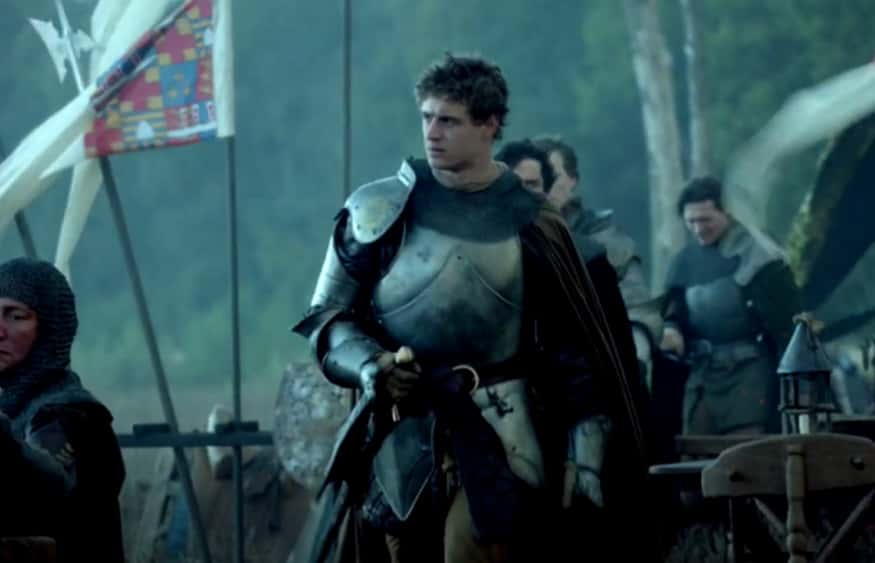 BBC, The White Queen (2013)
BBC, The White Queen (2013)
36. He Lost His Crown...For Now
Margaret of Anjou and Richard Neville achieved what had once felt impossible: They restored Henry VI. Unfortunately, they immediately realized that they might have made a terrible mistake. Henry was still the same old Henry, and he was useless in helping consolidate control. There's also the fact that Neville had fought for York for many years, and many of his new Lancastrian allies hated his guts.
They wouldn't get long to enjoy their victory. Within just a few months, Edward was already planning for his triumphant return.
 BBC, The Hollow Crown (2012–2016)
BBC, The Hollow Crown (2012–2016)
37. He Waltzed Back Into London
Edward returned to England by March 1471. With support from the Duke of Burgundy, he gathered an army of his own. Next, he got his treacherous younger brother, George, the Duke of Clarence, to defect back to his side. By April, he was able to march into London unopposed and take Henry VI prisoner. Everything was going remarkably smoothly—but he still had Neville to deal with.
38. He Took Out His Biggest Threats
Henry VI's return to the throne lasted all of...six months. Soon after Edward IV retook London, his forces won two incredibly pivotal battles. First, at the Battle of Barnet, his men slew Richard Neville, the Kingmaker, on the field. Then, mere weeks later, at the Battle of Tewkesbury, Henry VI's son Edward of Westminster met the same fate.
Just like that, Henry VI's most powerful support and his heir to the throne were taken off the board.
39. The King Is Dead, Long Live The King
In one of history's greatest coincidences, Henry VI mysteriously passed in the Tower of London mere days later. Records from the time state that he succumbed to "melancholy" upon hearing of his son's end. How incredibly convenient for Edward! Though centuries later, when archaeologists uncovered Henry's remains, the vicious wounds they discovered looked a lot more "murdery" than melancholy...
For now, the Lancastrian threat was all but extinguished—or so Edward thought. Regardless, he didn't have time to worry about any further Lancastrian claimants to the throne—he had bigger problems to deal with in his own palace.
 BBC, The Hollow Crown (2012–2016)
BBC, The Hollow Crown (2012–2016)
40. His Brother Hadn't Learned His Lesson
Being king wasn't easy the first time around, so why would anything be different now? The restored King Edward IV yet again had to deal with rebellions—and yet again, some familiar faces were behind it all. His brother George had switched sides once, and he still hadn't learned his lesson. Though never officially linked to the newest rebellion, Edward was clearly fed up with his little bro.
Blood or not, Edward had finally decided to make his brother pay.
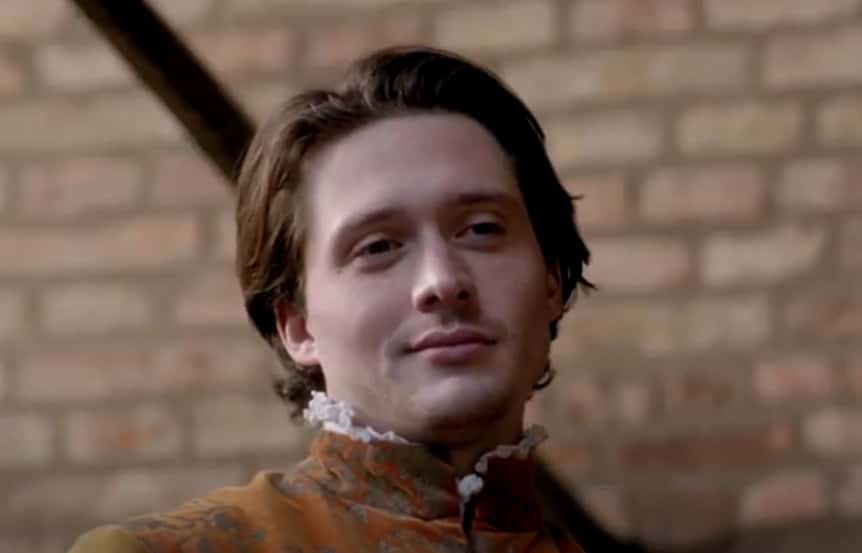 BBC, The White Queen (2013)
BBC, The White Queen (2013)
41. He Offed His Own Blood
This was the last straw. Edward finally accused George of treason and had him secretly executed in the Tower of London. He left no account of the execution, but legend has it that Edward had his brother drowned in a barrel of Malmsey red, his favorite drink. King Edward IV was officially done messing around. He had the throne again, and this time, he meant to keep it.
42. He Got A Big W...
It was time for King Edward IV to finally get to do some real king stuff—like declaring war on France! And it couldn't have gone better: King Louis didn't feel like fighting, so he signed the Treaty of Picquigny with Edward. Not only did this finally put a formal end to the Hundred Years War (yes, that was technically also still going all that time), but Edward also made out like a bandit: Louis paid him 75,000 crowns to call off his dogs, plus another 50,000 a year as a pension.
Only, not all of Edward's kingly activities worked out quite so well...
43. ...Followed By A Big L
Edward IV also tried to usurp the Scottish throne and install a puppet: The Scottish king's brother, Alexander Stewart. Edward knew all about brotherly conflict, so this was a no-brainer. Unfortunately, this plan didn't work out so well. Stewart chickened out at the last minute, forcing Edward to retreat back to England with absolutely nothing to show for his expensive campaign.
Oh well, you win some you lose some: At least Edward knew exactly how to, ahem, distract himself back home.
44. He Had Many Mistresses
You would think that, after all the fuss involved with marrying Elizabeth Woodville, Edward would have at least stayed faithful to her. Well then you'd be giving him too much credit. He was, at the end of the day, still a spoiled brat who cared only about getting what he wanted. He had many mistresses during his reign—a welcome distraction from all the scheming of the game of thrones.
But of all his mistresses, none could hold a candle to Jane Shore.
45. She Was As Beautiful As His Wife
Believe it or not, this playboy king didn't always treat the women he slept with very well. He discarded women like napkins—until he met Jane Shore. Like Elizabeth Woodville before her, records say she was uncommonly beautiful and intelligent, and she had Edward wrapped around her finger. Many women in her position would have used such power for personal gain or to punish their enemies.
But, for living in a time of non-stop conflict, Jane Shore was a rare type: She was a decent person.
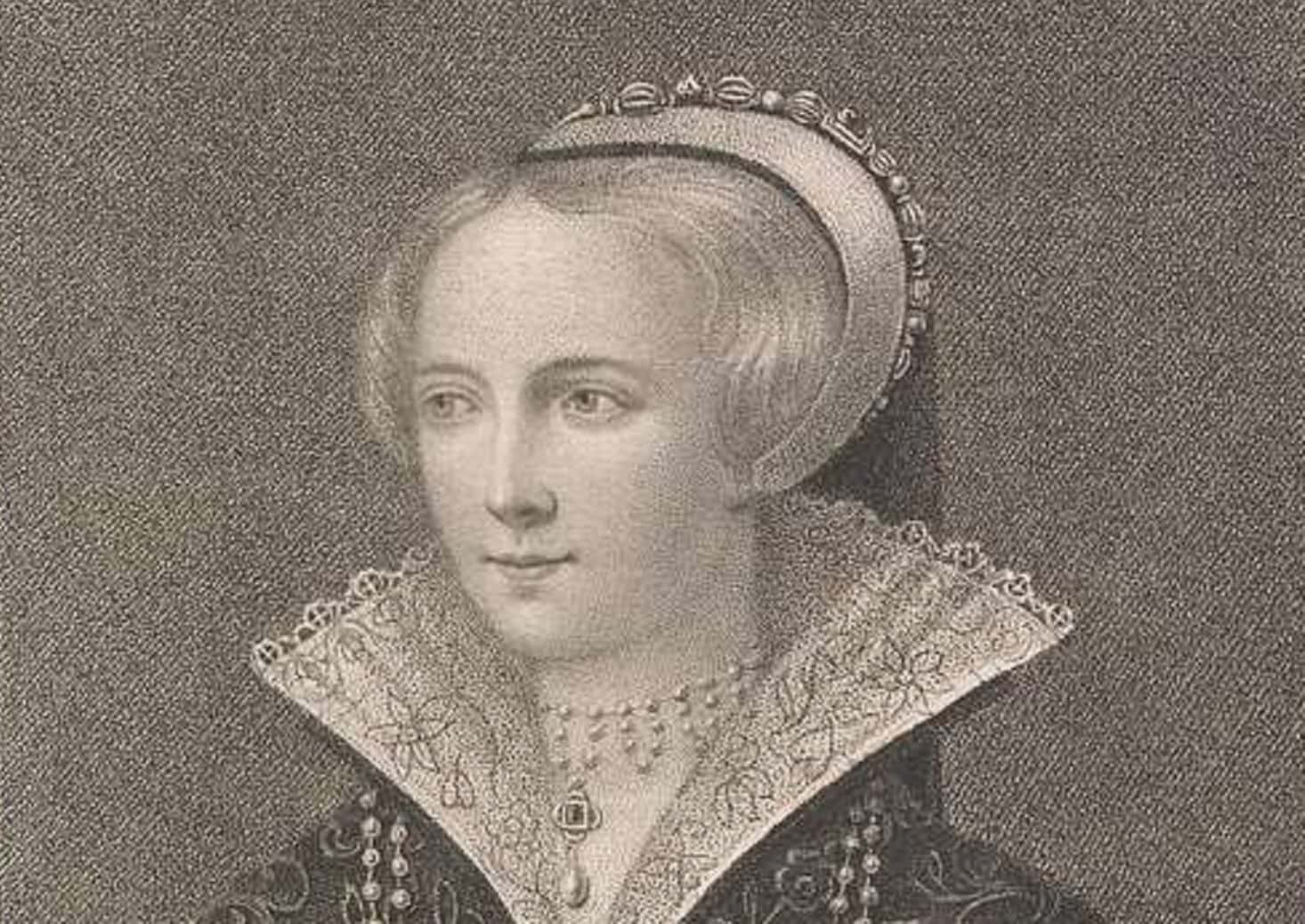 Yale Center for British Art, Picryl
Yale Center for British Art, Picryl
46. She Was Uncommonly Kind
Edward was not a king known for his mercy, but what Shore wanted, she got. However, it wasn't gifts she asked for. Rather, she often brought people who had fallen out of favor with the king to his attention, asking for leniency and forgiveness. It's hard to hate a mistress who's so selfless—though I doubt Queen Elizabeth was particularly charmed.
47. He Lived For Pleasure
Edward IV had been fighting for his entire life, but in the end, he proved to be his own worst enemy. As a man who had never heard "no" in his entire life, it should come as no surprise that Edward was an incorrigible hedonist. Women, food, drink: Edward couldn't get enough of any of them. In fact, when it came to food, Edward's addiction was straight-up disgusting.
48. He Binged And Purged
Though medieval medicine wasn't exactly sophisticated, they had some things down pat. For instance, Edward had ample access to emetics: medicines that make you vomit. For Edward, they were perfect! He could simply gorge himself until he was ready to burst, then pop an emetic, wait a few minutes...then start all over again!
You don't need modern medicine to know that probably isn't good for you—and it eventually caught up to Edward IV.
49. It Cost Him His Life
Edward IV accomplished a lot in his life, perhaps made even more impressive by the fact that he barely made it to age 40. He fell fatally ill in 1483, and his condition deteriorated fast. However, before he bit the bucket, he did update his will. The most important change was naming his younger brother Richard as Protector of England.
Since his eldest son was only 12, Edward thought that this act would solidify his legacy. Little did he realize, he had actually ensured the end of everything he had ever achieved.
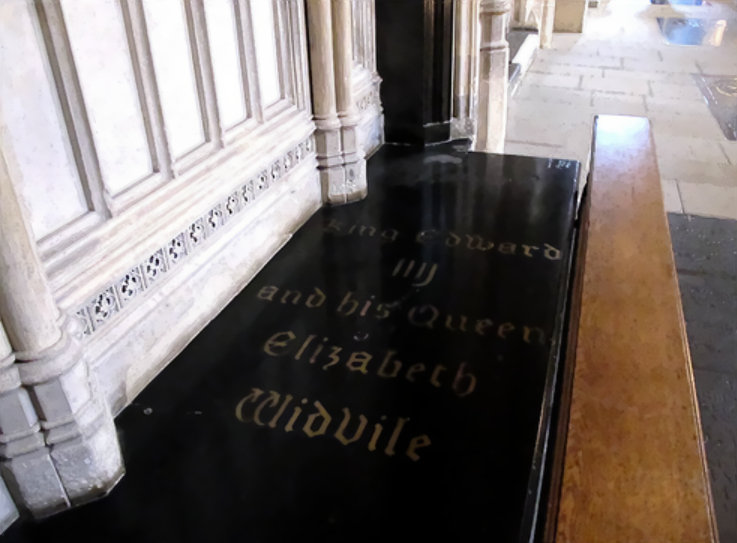 VCR Giulio19, CC BY-SA 4.0, Wikimedia Commons
VCR Giulio19, CC BY-SA 4.0, Wikimedia Commons
50. His Brother Tore Down His Legacy
Did Edward not learn anything from his treacherous brother George? Within days of Edward's end, his brother Richard captured his sons and locked them in the Tower of London. Then he had Edward's marriage declared illegitimate, removing the two boys from the line of succession, and had himself crowned King Richard III. No one ever saw the Princes in the Tower ever again.
Richard stabbed his brother in the back before the body was even cold—and it cost the House of York everything.
 BBC, The White Queen (2013)
BBC, The White Queen (2013)
51. His Daughter Ended Up With A Crown
You thought the Wars of the Roses had finished? Not quite yet. Richard III's shady method of claiming the throne left a bad taste in everyone's mouth, and that's all it took for old tensions to resurface. Less than two years later, some upstart named Henry Tudor defeated Richard at the Battle of Bosworth field. Then, to bring everything full circle, he married Edward IV's daughter, Elizabeth of York.
This marriage finally united York and Lancaster, and put the Wars of the Roses to bed for good. Edward passed thinking he'd been the victor—but his final act sealed York's fate.
52. Oh, Sweet Irony
There's one final twist in Edward IV's story. Remember when he married the commoner Elizabeth Woodville, scandalizing the entire kingdom? To justify his decision, he cited previous instances of royals marrying commoners. For instance, Henry VI's mother, Catherine of Valois, had married her common-born chamberlain. That man's name? Owen Tudor.
That gave all future Tudors a claim to the English throne...a claim Henry Tudor—now King Henry VII—used to pull the House of York down once and for all.
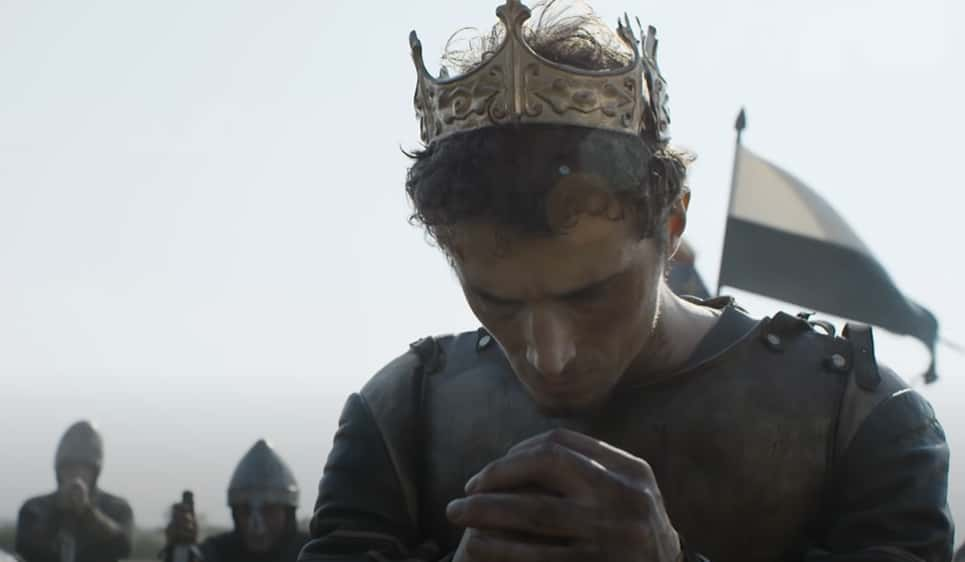 Channel 5 Productions, Britain's Bloody Crown (2016)
Channel 5 Productions, Britain's Bloody Crown (2016)


